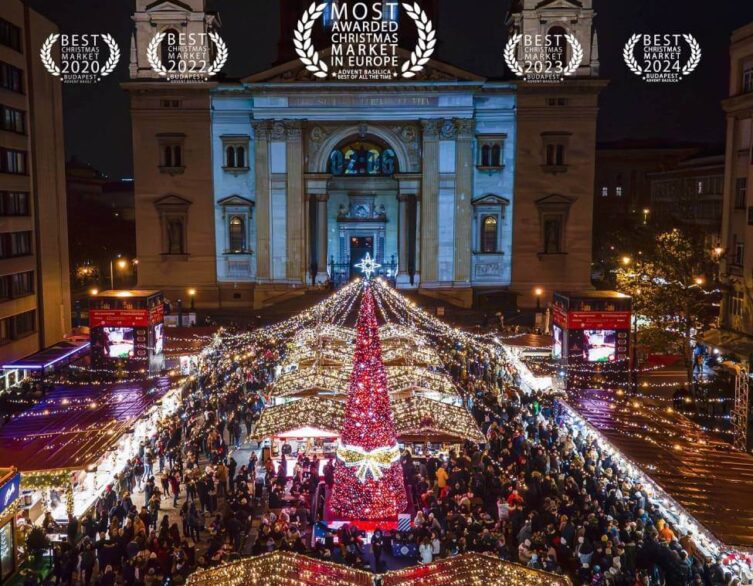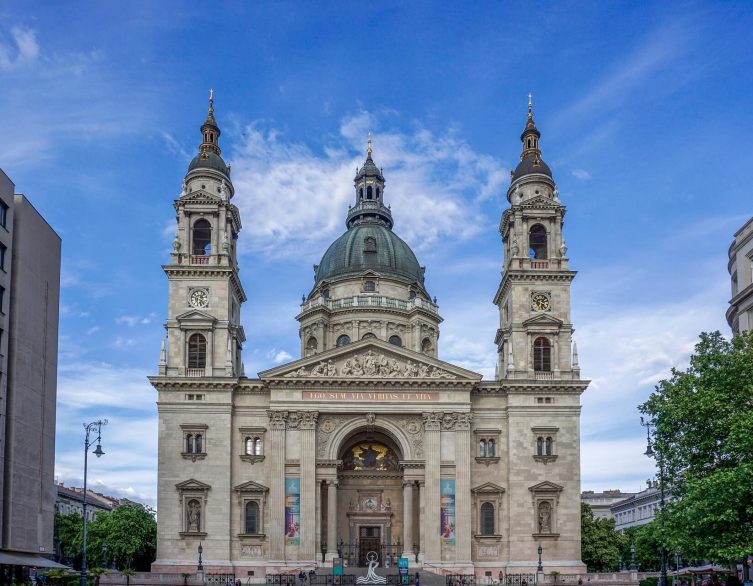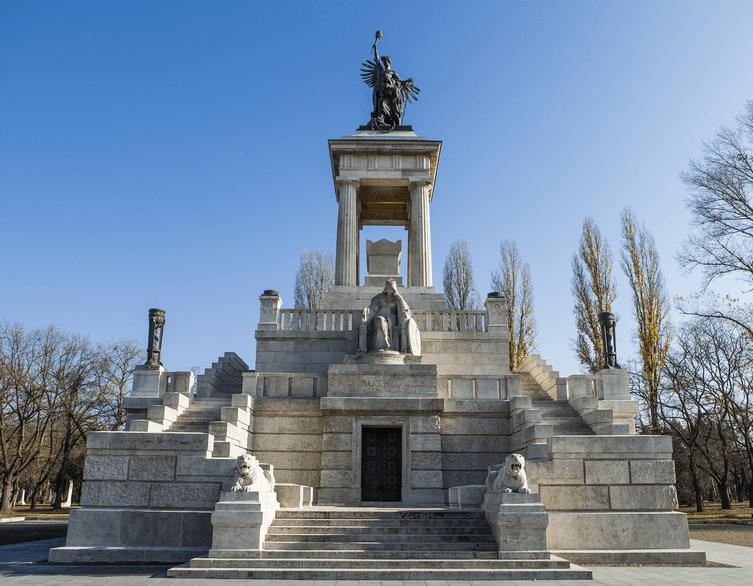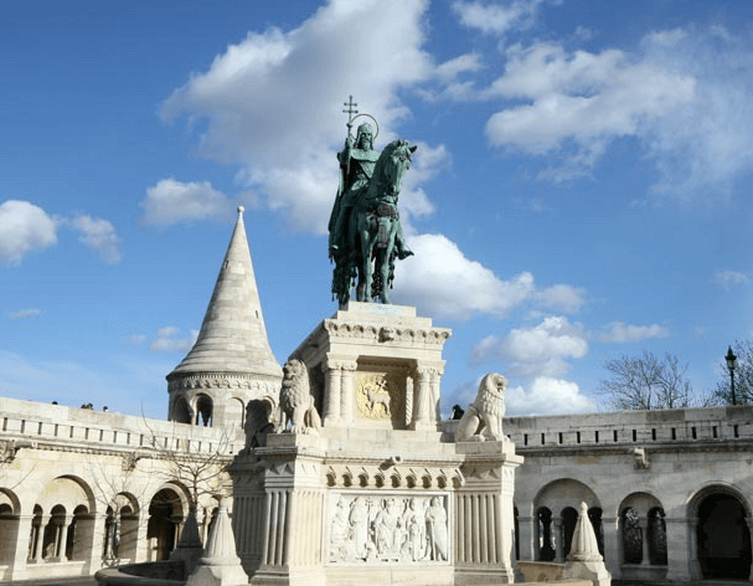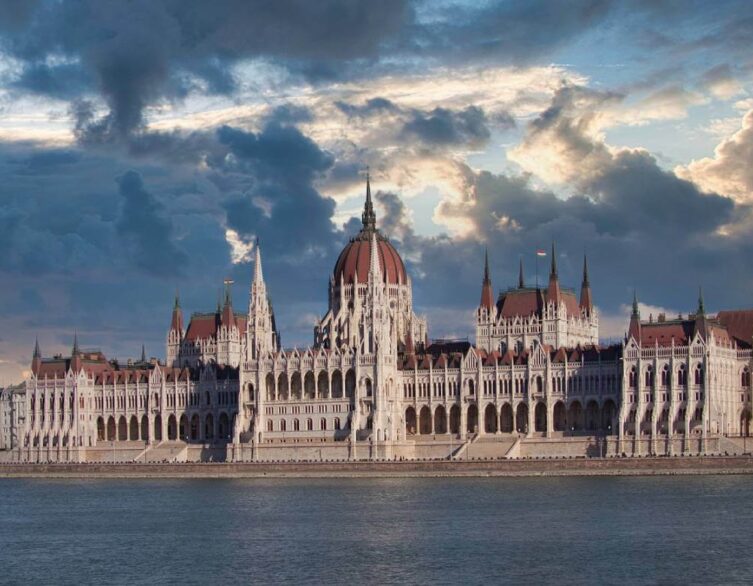St. Stephen’s Basilica – Home of the Holy Right Hand
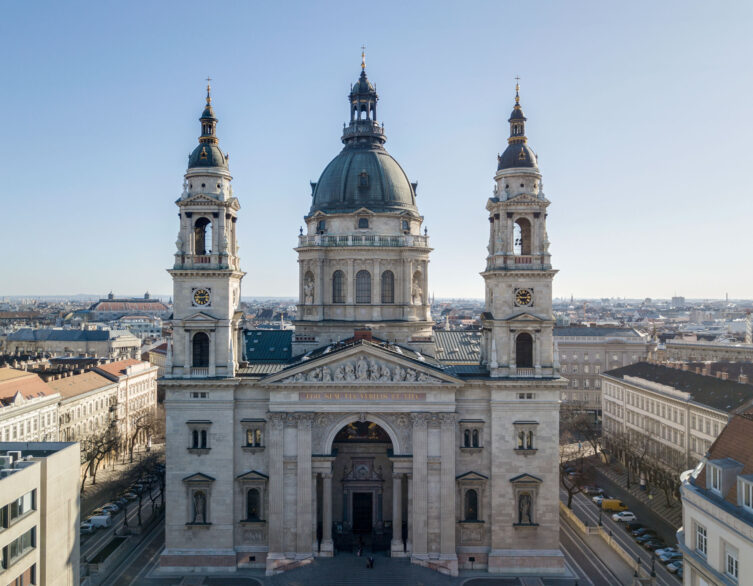
Located in the very center of Budapest and the hearts’ of Hungarians, St. Stephen’s Basilica stands as a testament to Hungary’s rich history and architectural prowess. This majestic sanctuary, dedicated to the country’s founding monarch, King Stephen, beckons visitors from far and wide to explore its grandeur and significance. In this article, we’ll delve into the historical and architectural marvels of St. Stephen’s Basilica, provide guidance on how to reach this iconic landmark, and highlight some nearby attractions that complement your visit.
Historical Significance
St. Stephen’s Basilica’s journey began in 1851, born from the collective spirit of the community in the aftermath of the great flood of 1838. The construction narrative is one of resilience, with the Basilica rising from the very hill where hundreds sought refuge during the disaster. Though officially completed in 1906, the Basilica’s history is punctuated by notable events, including its elevation to the status of a ‘minor basilica’ by Pope Pius XI in 1931 and its role as the central venue for the 34th International Eucharistic Congress in 1938.
Architectural Marvel
Step inside St. Stephen’s Basilica, and you’ll be greeted by a breathtaking spectacle. The Greek cross layout, adorned with intricate mosaics, paintings, sculptures, and stained glass, can accommodate up to 8,000 worshippers during ceremonies. The Basilica’s architectural grandeur is further enhanced by its six bells, including the colossal St. Stephen’s Bell, weighing an impressive 9.2 tons. The crowning glory, however, is the panoramic terrace atop the 96-meter-high dome, offering a stunning 360-degree view of Budapest, a symbolic nod to Hungary’s founding in 896 AD.
Cultural Hub
Beyond its religious significance, St. Stephen’s Basilica serves as a vibrant cultural hub, hosting concerts and events within its hallowed halls. The Basilica boasts one of Europe’s grandest organs, whose melodies resonate through weekly concerts. Visitors can also pay homage to Hungary’s founding monarch by visiting the Treasury, where the Holy Right Hand of King Stephen is preserved as a sacred relic.
Best deals of Budapest
Getting There
Reaching St. Stephen’s Basilica is a breeze, thanks to its central location in Budapest. The Basilica’s address is 1051 Budapest, Szent István tér 1. Visitors can easily access the landmark via public transportation, with the nearest metro station being Bajcsy-Zsilinszky út on the M1 line. Alternatively, several bus and tram routes have stops in close proximity to the Basilica.
Opening Hours: To plan your visit, keep in mind the Basilica’s opening hours: Monday – Saturday: 9:00 AM – 5:45 PM Sunday: 1:00 PM – 5:45 PM
Nearby Attractions
While St. Stephen’s Basilica is undoubtedly the star attraction, its surrounding area offers a wealth of experiences. The adjoining St. Stephen’s Square, with its patterned cobblestones and Mediterranean charm, transforms into an Advent wonderland during winter and a lively terrace-lined oasis in summer. Just a short stroll away, you’ll find the iconic Hungarian Parliament Building, the Danube Promenade, and the vibrant shopping district of Váci Street.
St. Stephen’s Basilica is more than just a religious edifice; it’s a symbol of Hungary’s enduring spirit and cultural heritage. As you stand beneath its soaring dome, admiring the intricate artistry and soaking in the panoramic views, you’ll find yourself transported through centuries of history. Whether you’re a devout pilgrim, an architecture enthusiast, or a curious explorer, St. Stephen’s Basilica promises an unforgettable experience in the heart of Budapest.
Image source: https://www.bazilika.biz/
Related news
Related events




















